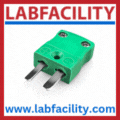
Posted to News on 7th Apr 2025, 13:00
Bridging the protocol divide
In manufacturing, connectivity between devices is no longer a luxury but a necessity. Here Beth Ragdale, software business manager at automation and control specialist, Beckhoff, explores how plant managers can ensure that their entire operation speaks the same language.

(See Beckhoff at Machine Building North, 10 April 2025, on stand 71)
Interoperability remains one of the biggest hurdles in industrial automation. Many industrial environments feature a mix of old and new technologies, each with its own communication protocols and proprietary software. This fragmentation results in inefficiencies, increased downtime and limited real-time decision-making capabilities.
Overcoming these challenges could have a huge benefit for manufacturers. When machines, sensors and control systems can communicate effectively, production processes become more streamlined. Data can be shared instantly across the factory floor, allowing for real-time monitoring and optimisation.
One of the primary benefits of interoperability is the ability to predict and prevent equipment failures. By enabling different systems to share performance data, predictive maintenance can be implemented. This minimises unplanned downtime, extends the lifespan of machinery and lowers maintenance costs.
Interoperability also allows manufacturers to adapt quickly to changing market demands, whether that means increasing production, modifying workflows, or integrating new technologies. A fully interoperable system ensures that new machines and software solutions can be easily added to the existing infrastructure without major disruptions or costly overhauls.
In a connected industrial environment, data from various sources, including IoT devices, production lines, and enterprise resource planning (ERP) systems, can be aggregated and analysed immediately. This provides plant managers with valuable insights into process inefficiencies, energy consumption and quality control for example, enabling more informed decision-making.
Interoperability doesn't just benefit operations - it also enhances security and regulatory compliance. Standardised communication protocols help ensure data integrity and reduce vulnerabilities. As cybersecurity threats continue to evolve, having a unified approach to data management is crucial for protecting sensitive industrial information.
Overcoming obstacles
Despite its many advantages, achieving full interoperability is not without obstacles. Firstly, many older machines were not designed for modern connectivity standards, making integration difficult. Second, different machines generate data in various formats, requiring translation mechanisms to ensure consistency. Finally, connected devices mean greater exposure to cyber threats, requiring robust security measures.
One approach to solving these challenges lies in open automation platforms like Beckhoff's TwinCAT software. TwinCAT enables interoperability by providing a universal environment for real-time control and communication across different devices and protocols. By supporting standard industrial communication protocols and a wide range of fieldbuses, such as OPC UA,MQTT, Modbus, EtherCAT, PROFINET and CANopen, TwinCAT helps unify disparate systems, ensuring that machines from different manufacturers can share data and work together efficiently.
Beyond connectivity, TwinCAT also facilitates data analysis and predictive maintenance by integrating cloud and edge computing capabilities. This means manufacturers can collect and process real-time operational data, allowing for proactive decision-making.
In an industry where downtime can lead to significant financial losses, the ability to predict and prevent failures through data exchange is a game-changer. As industrial automation continues to evolve, leveraging software-driven interoperability solutions like TwinCAT will be key to creating smarter, more adaptable production environments.
A connected world offers both immense possibilities and challenges. Industrial automation must overcome the challenges of interoperability to reap the benefits of a connected system.






